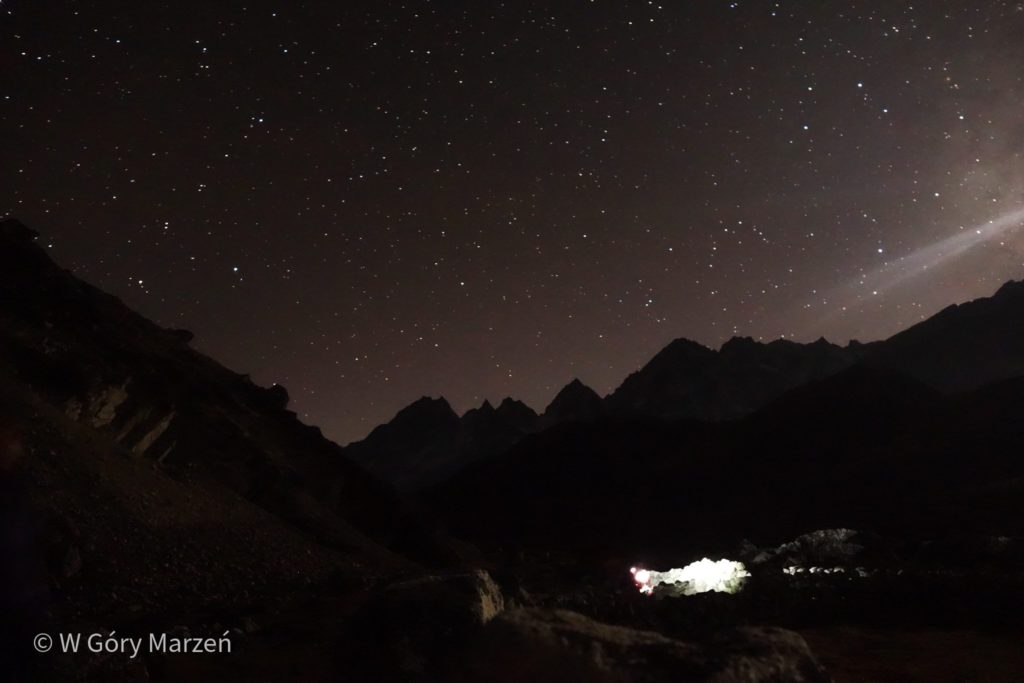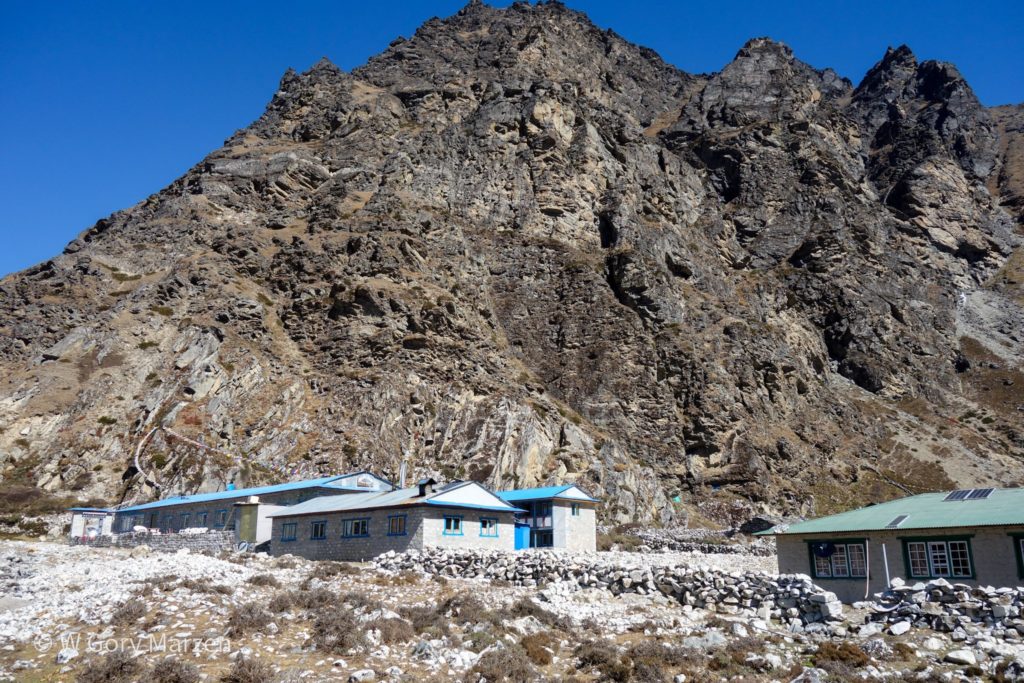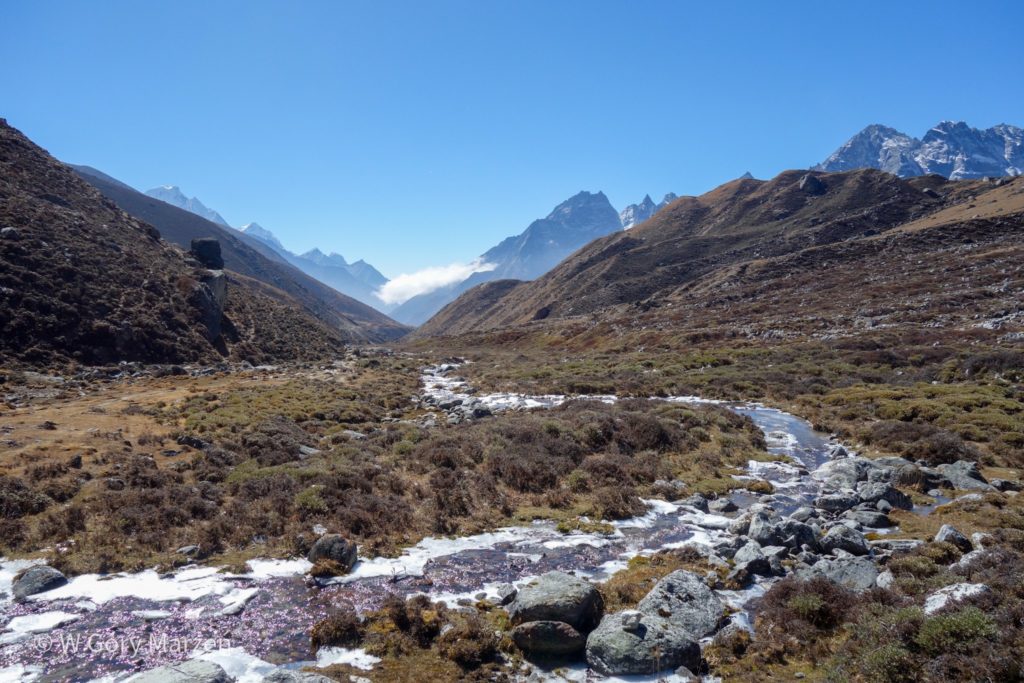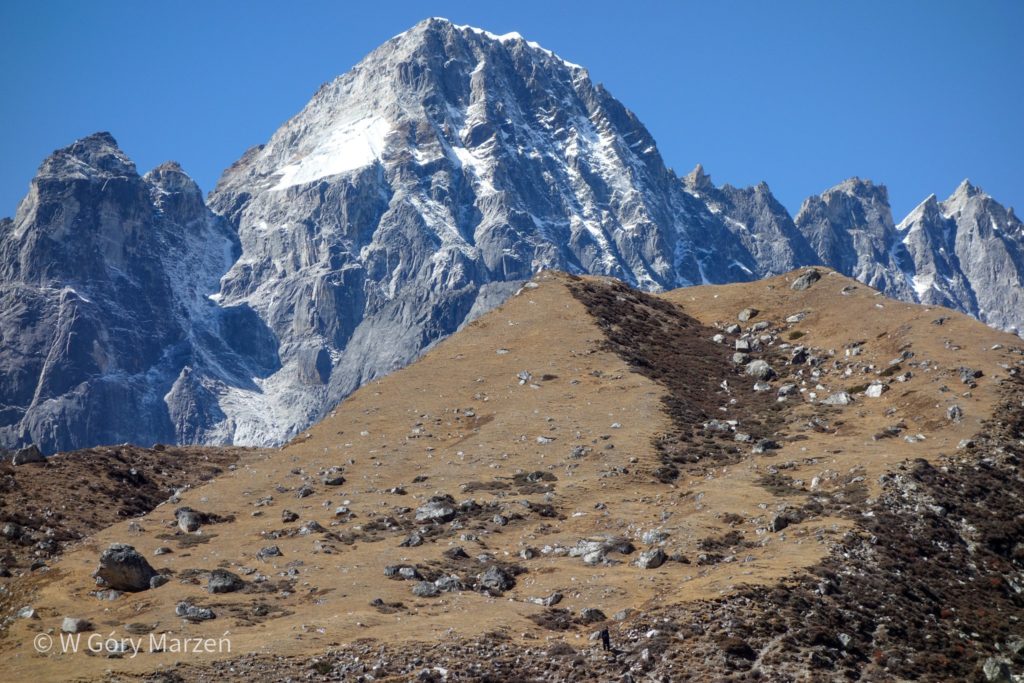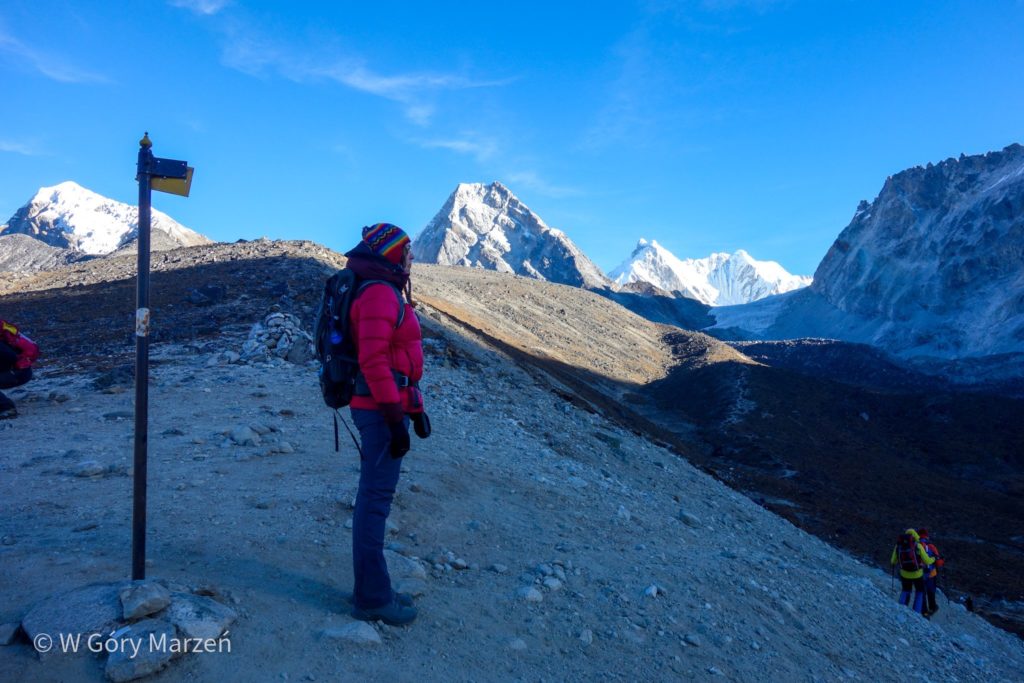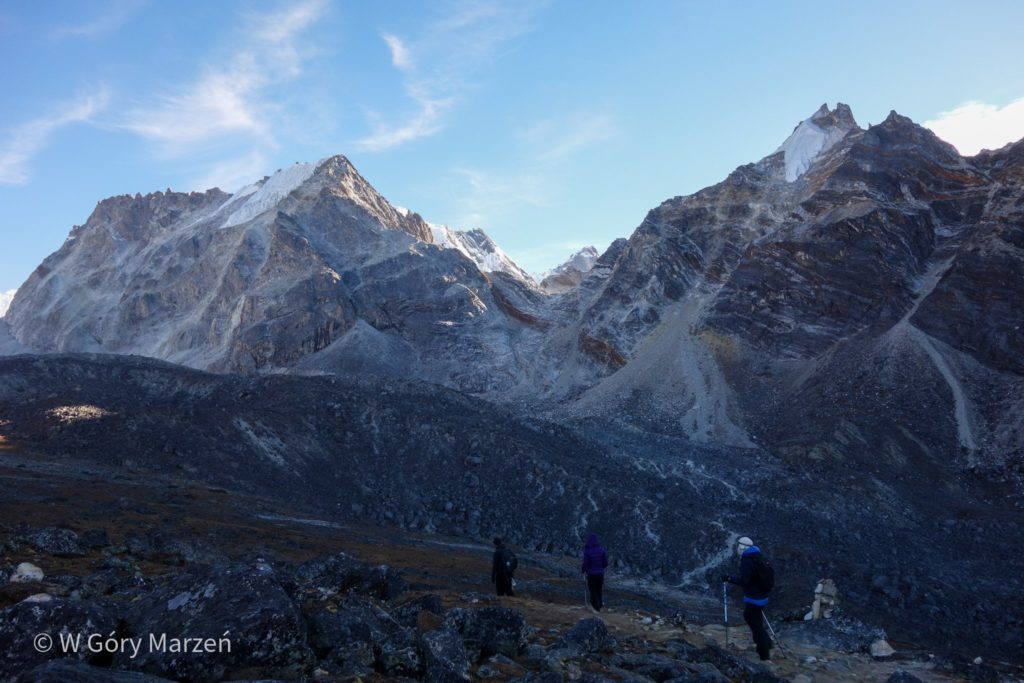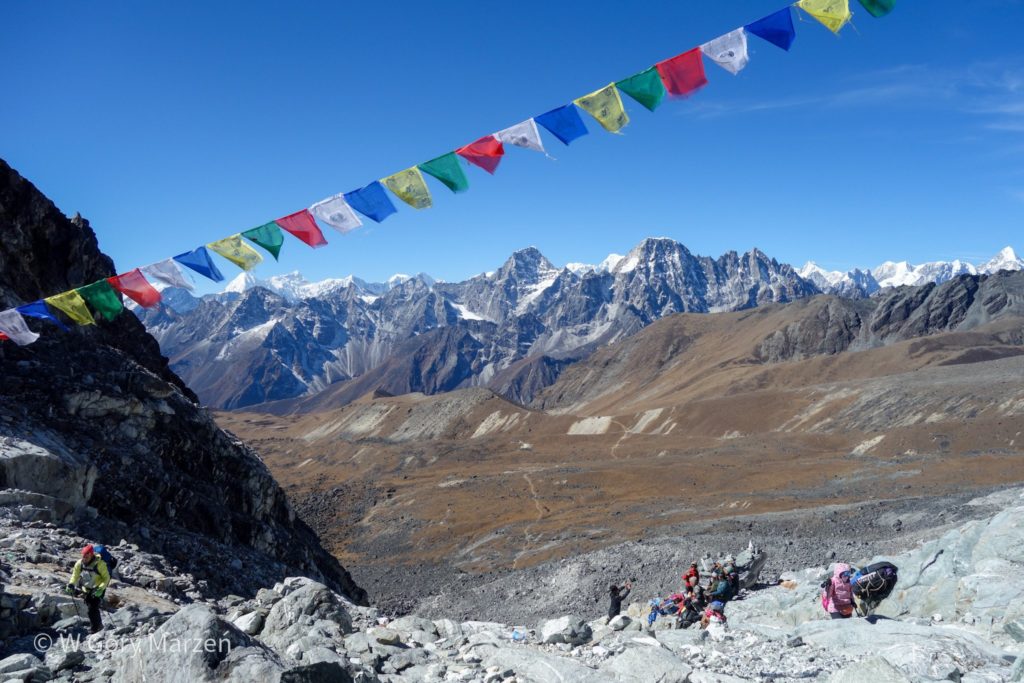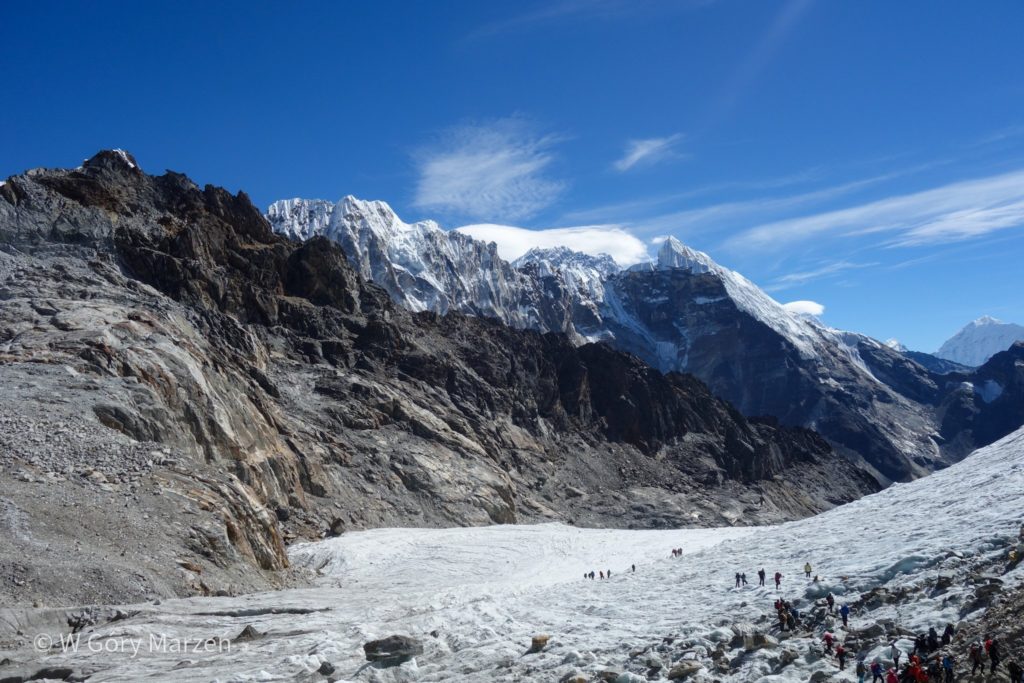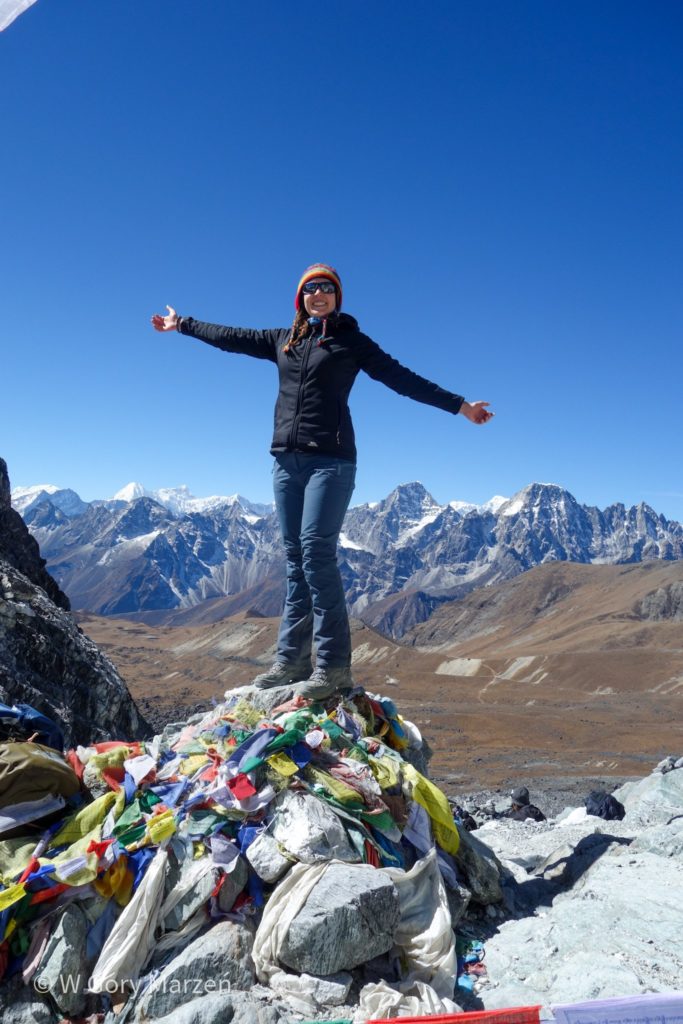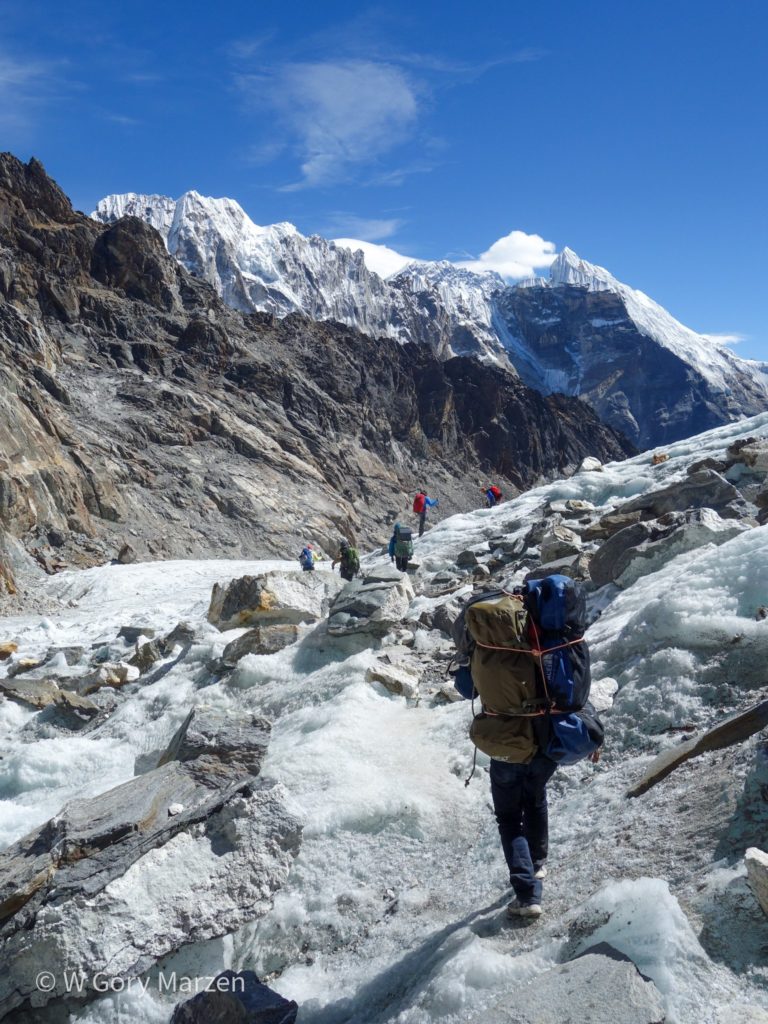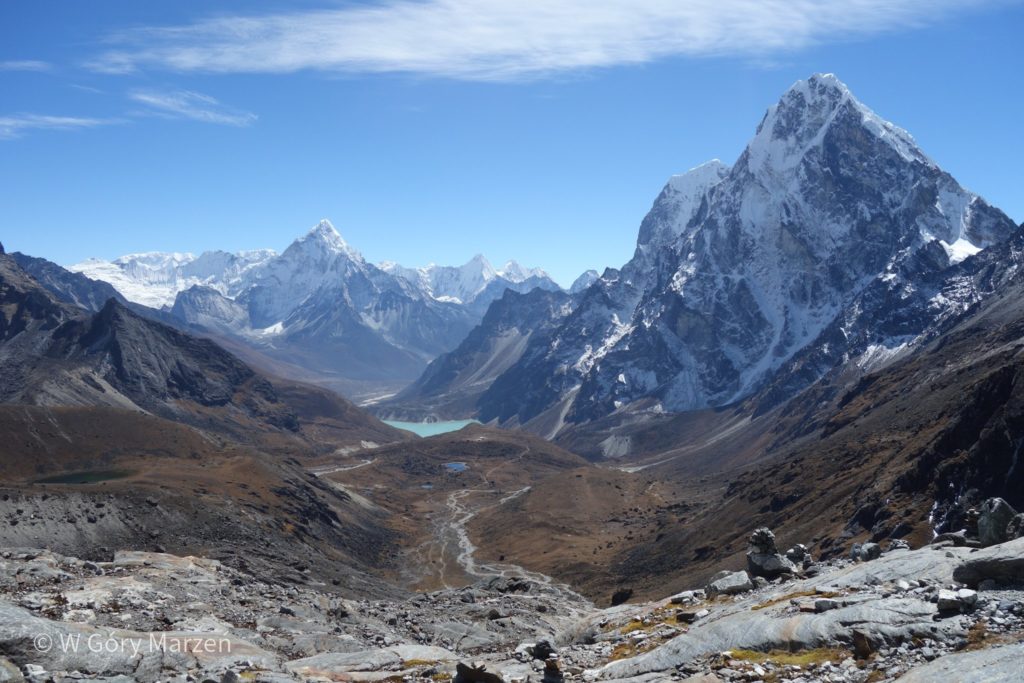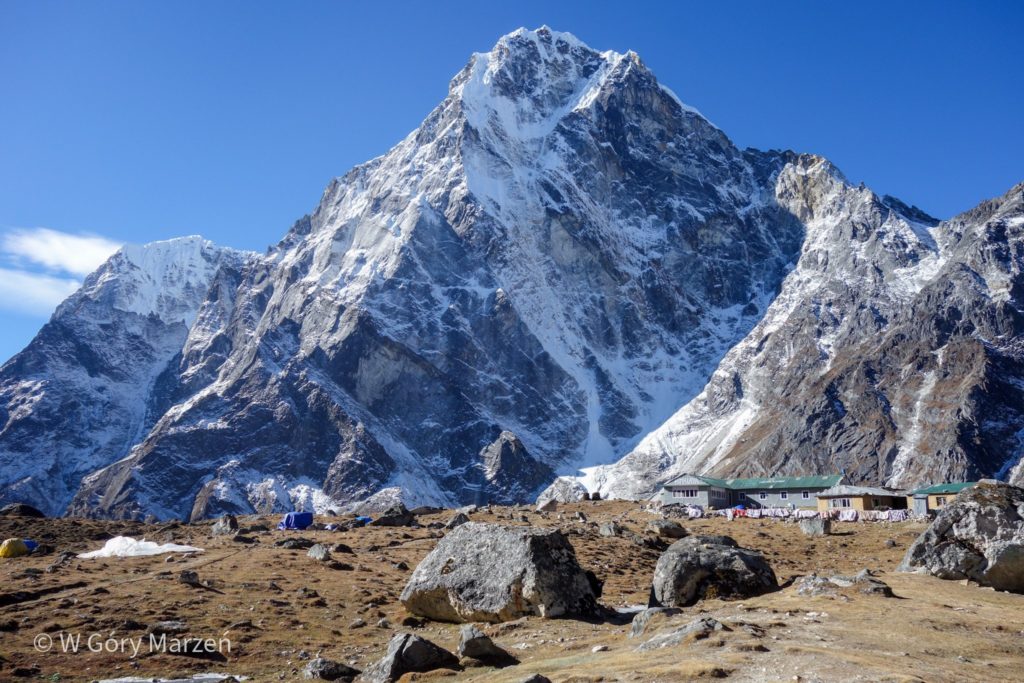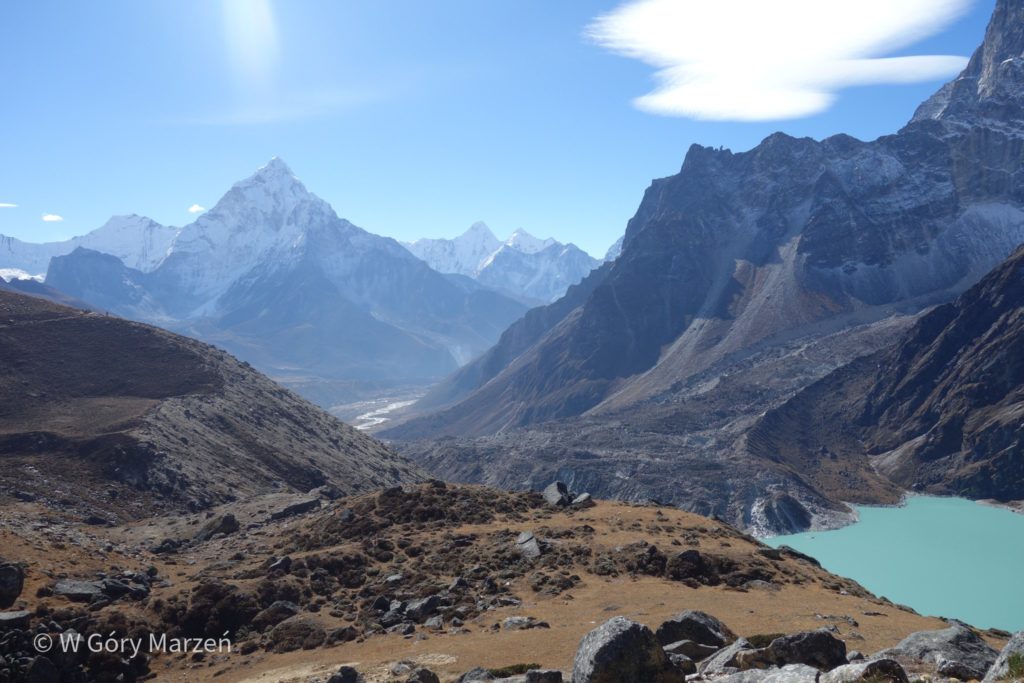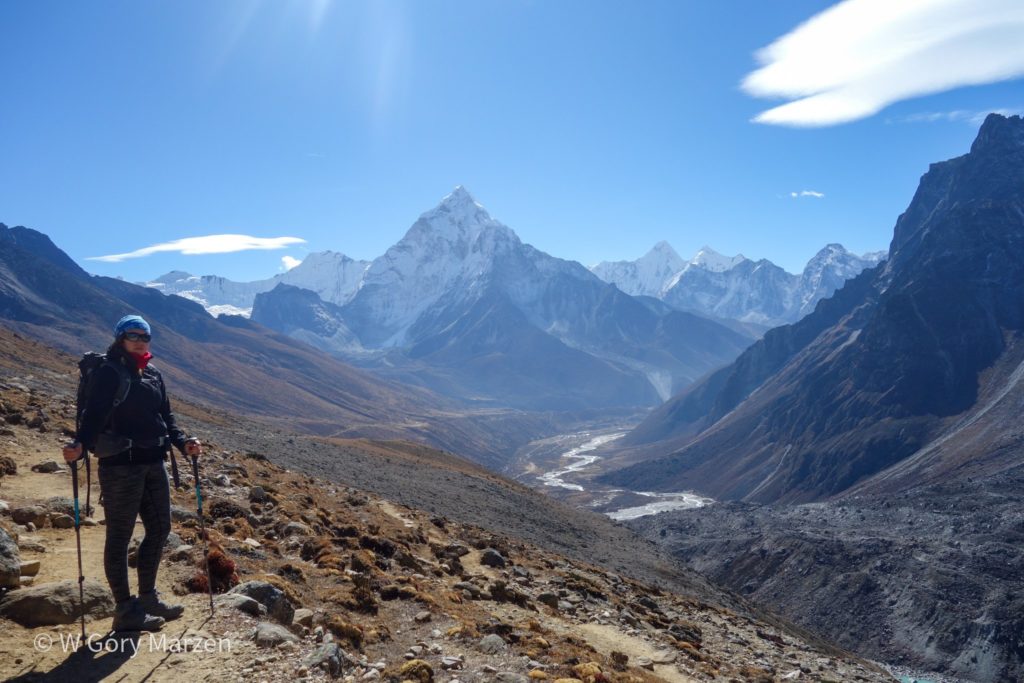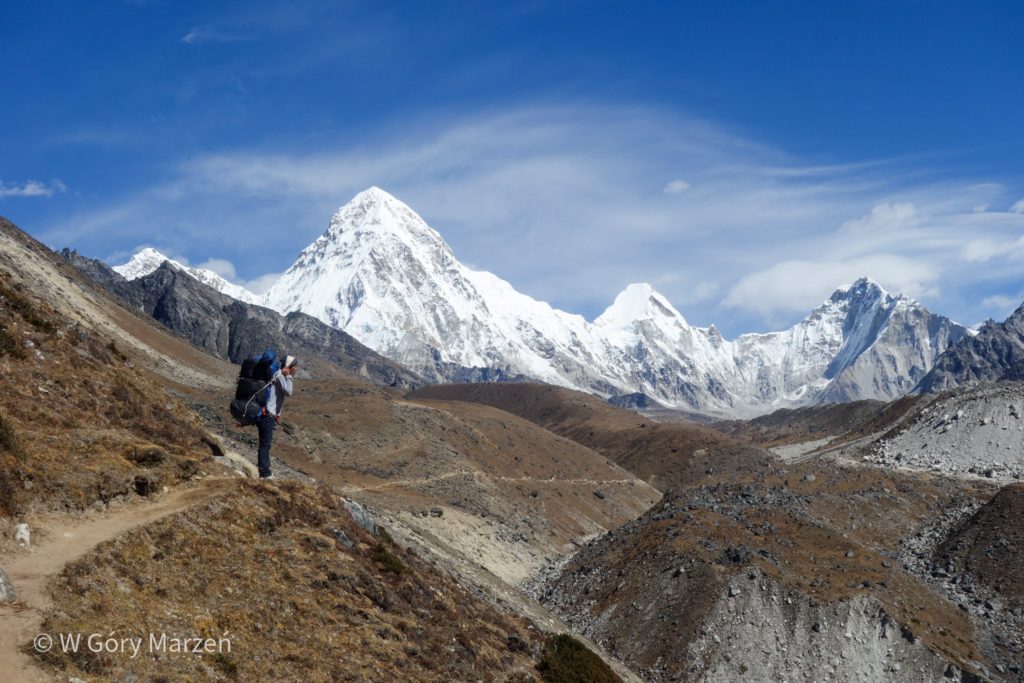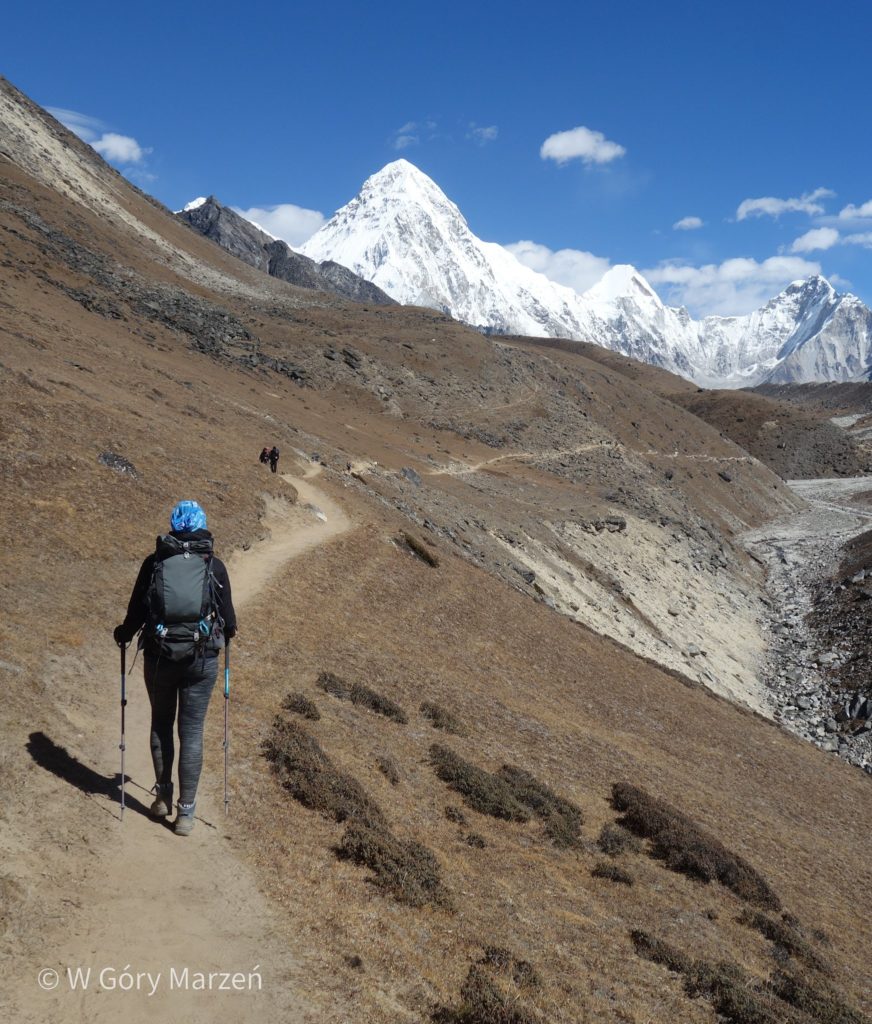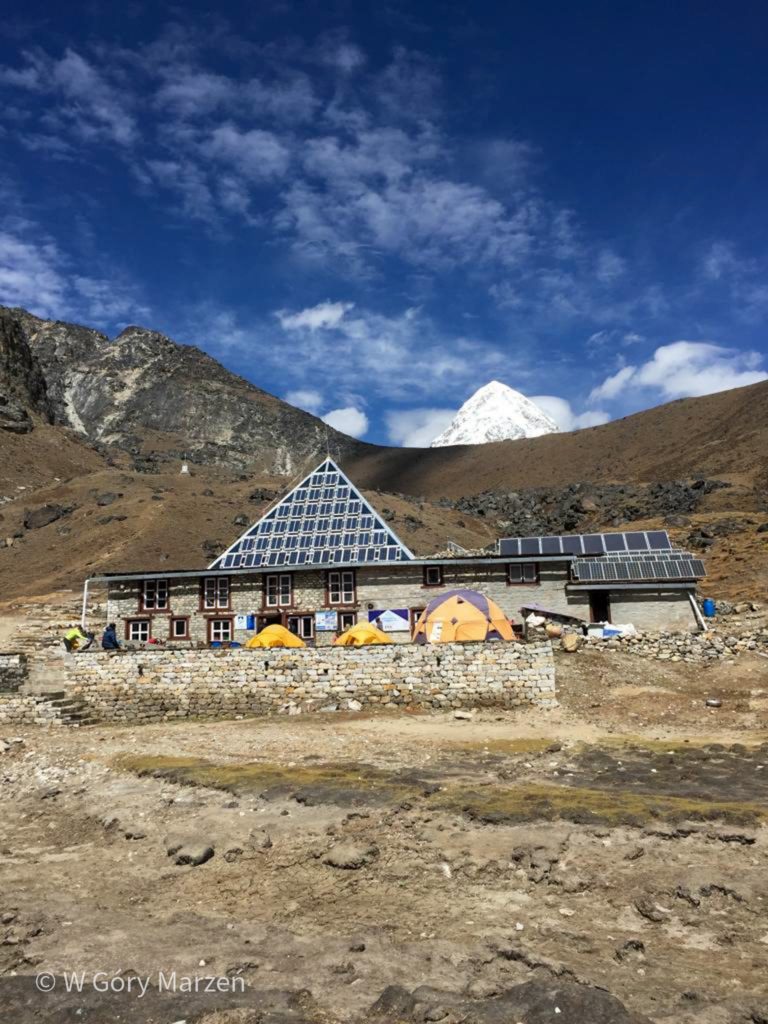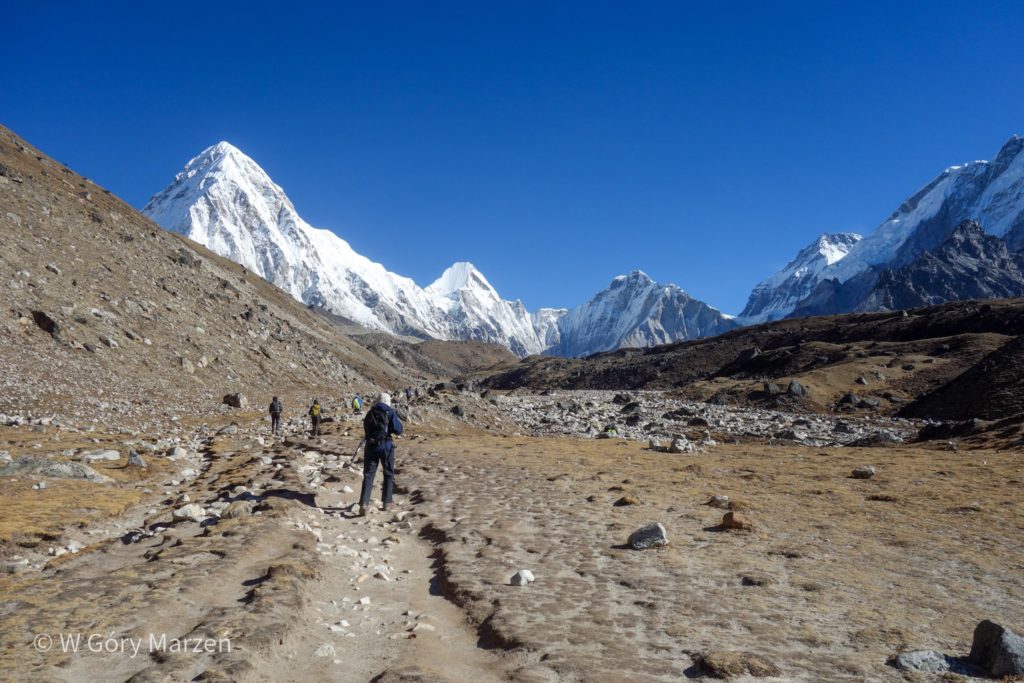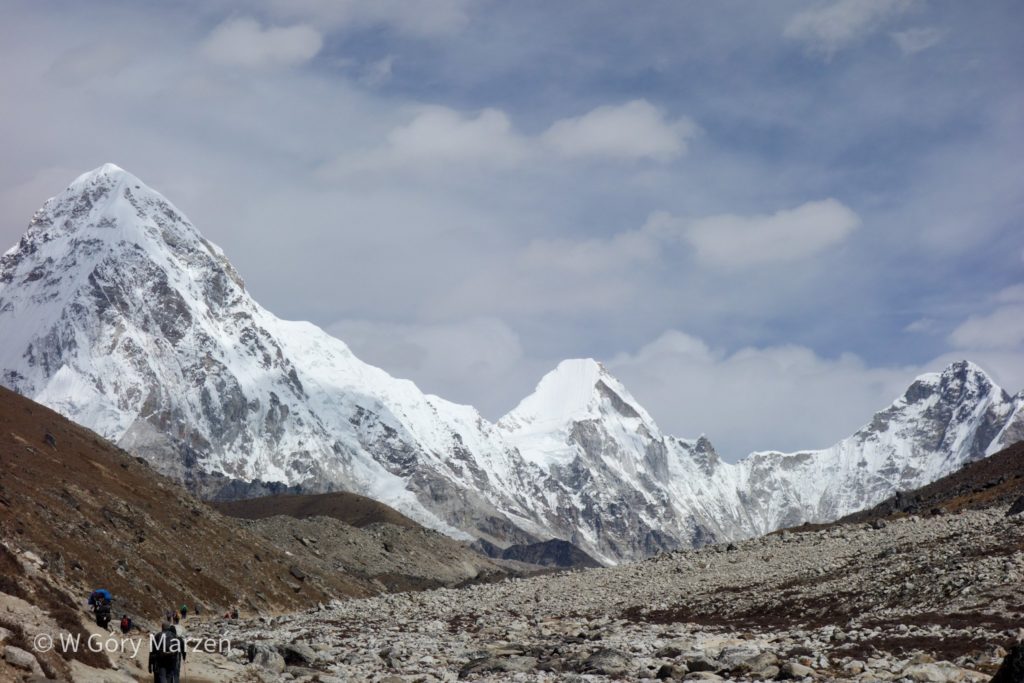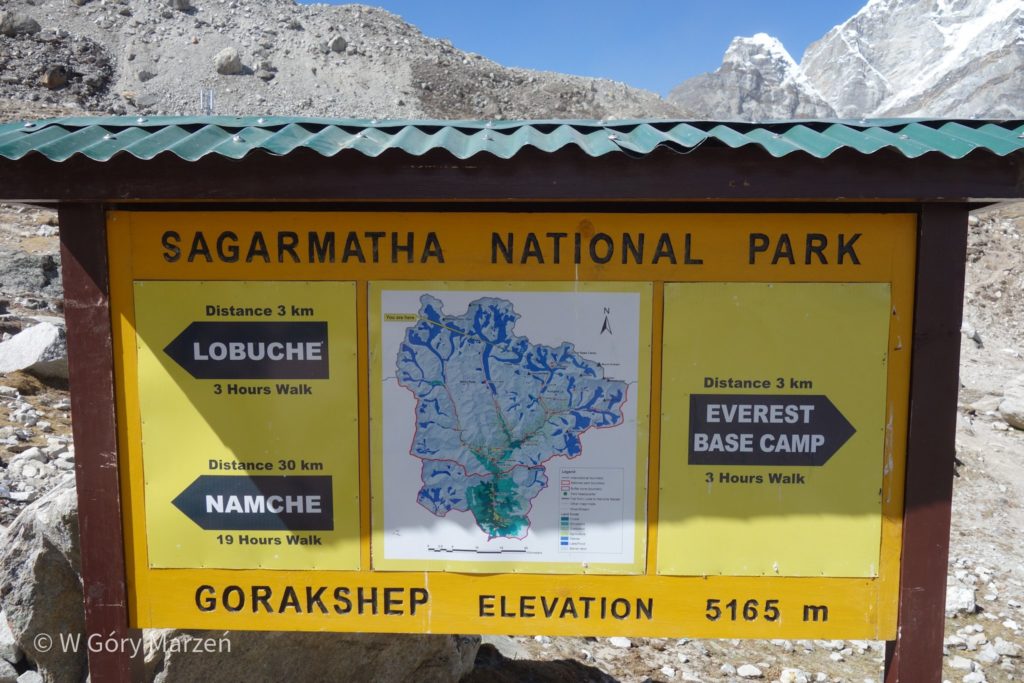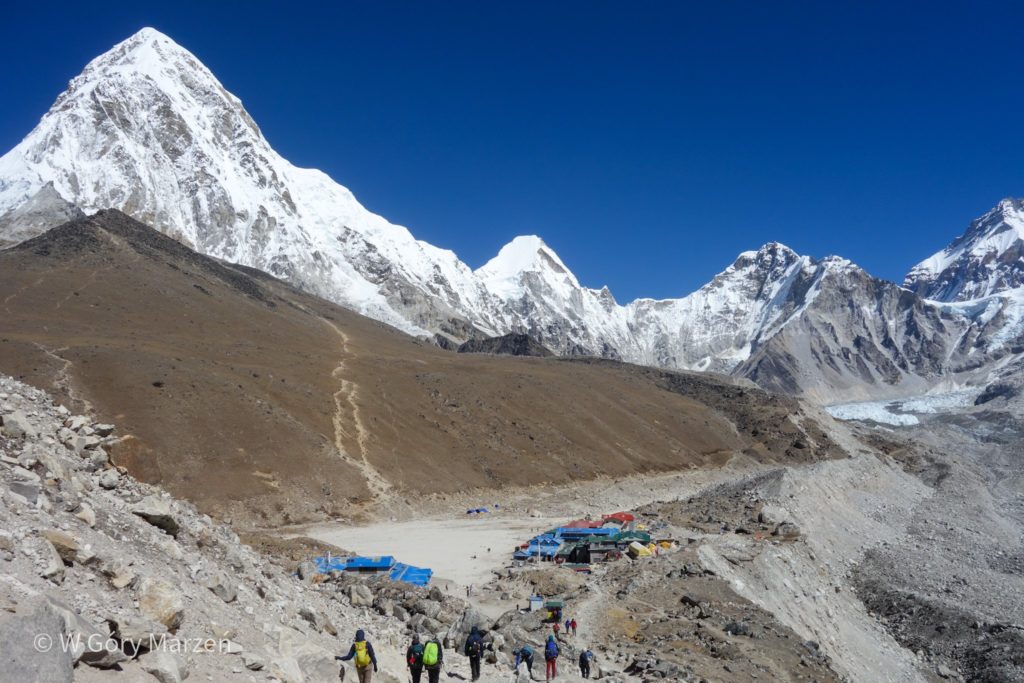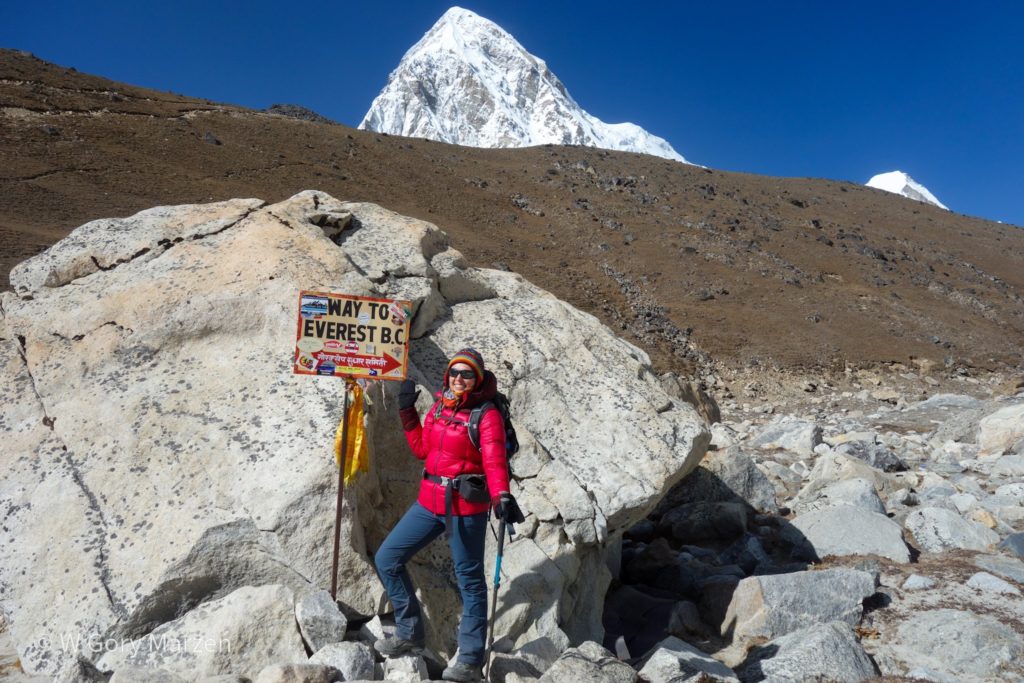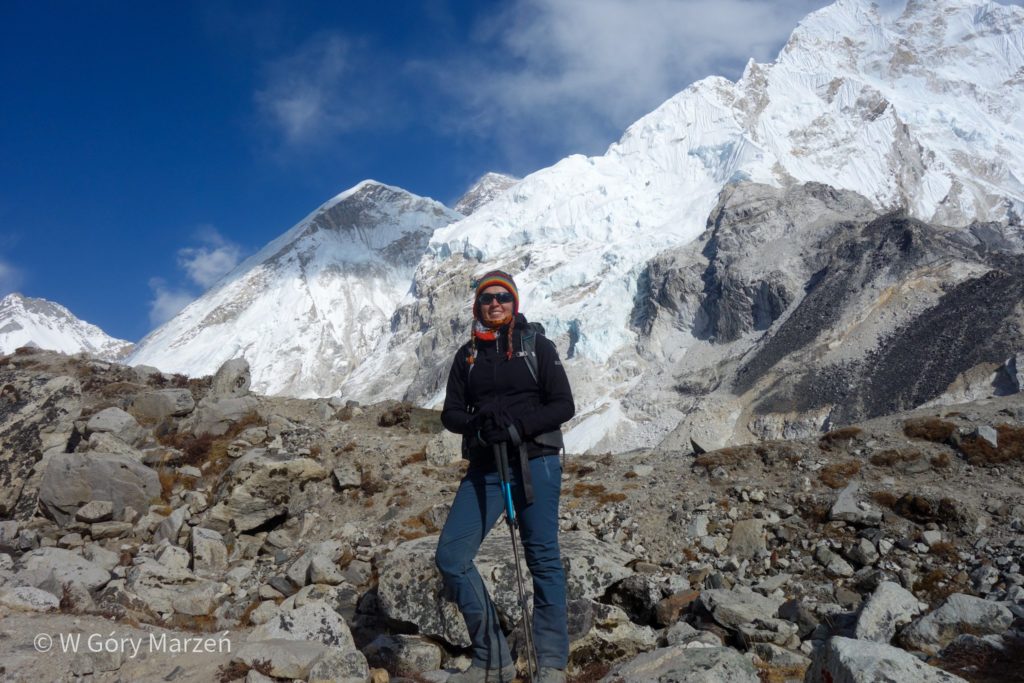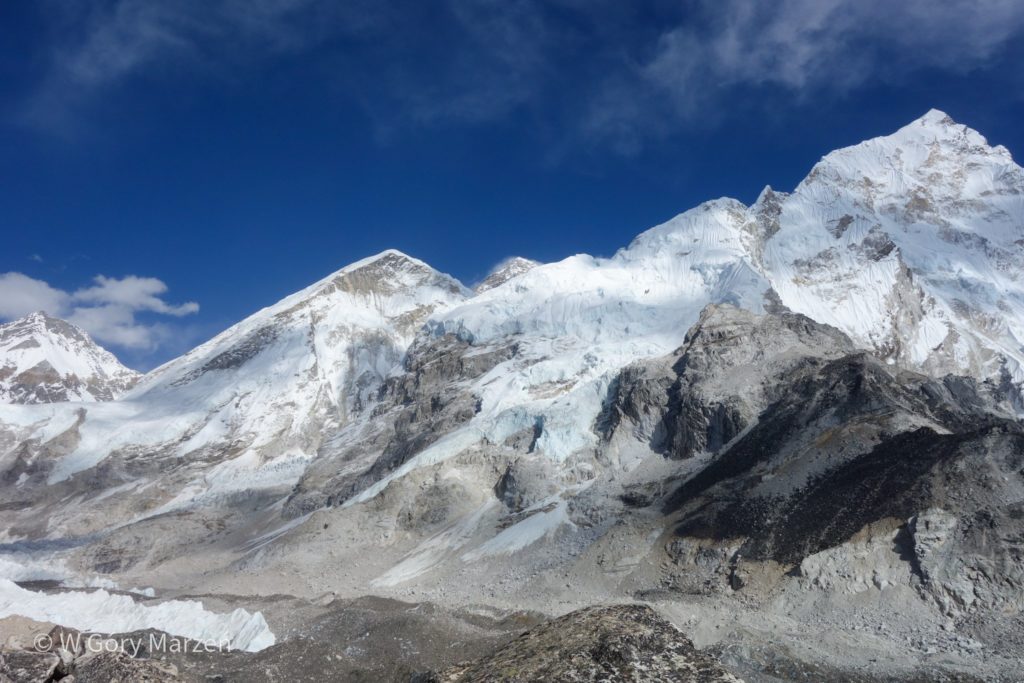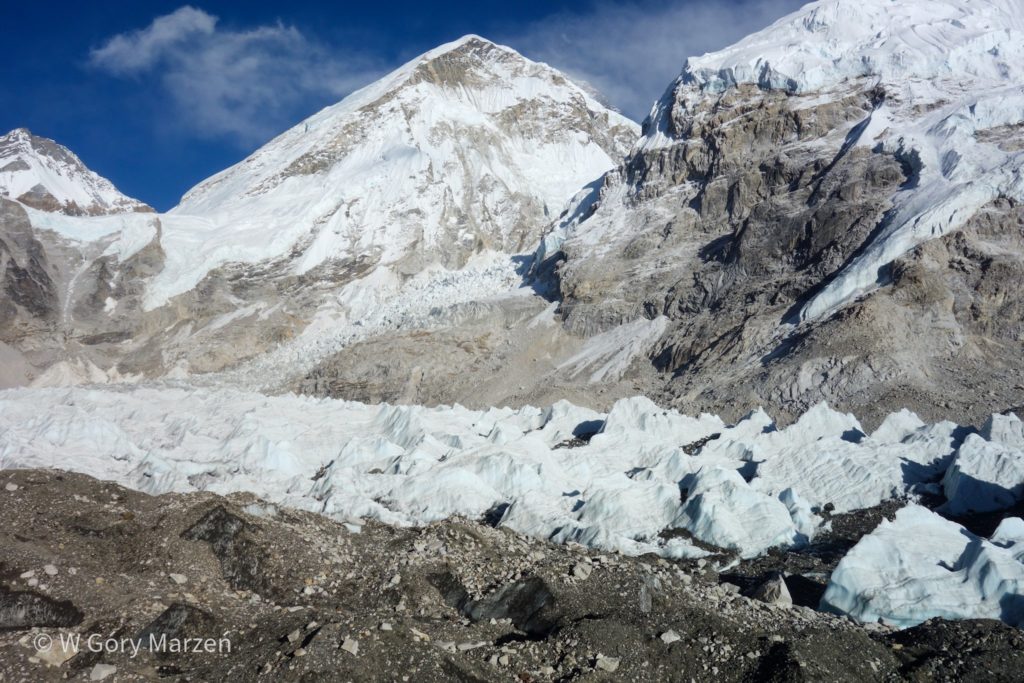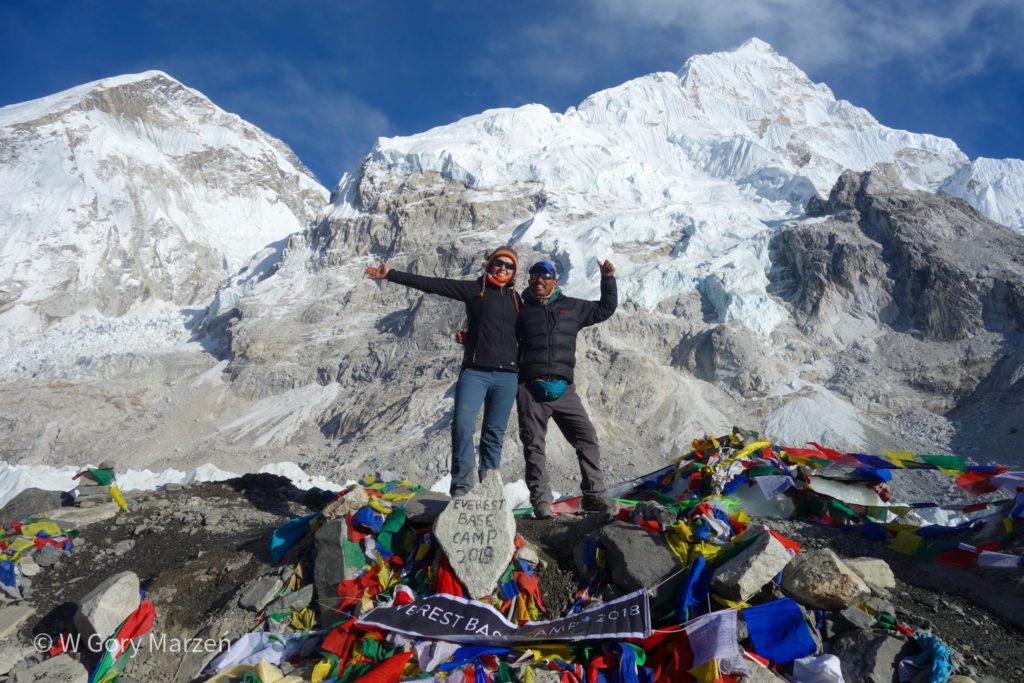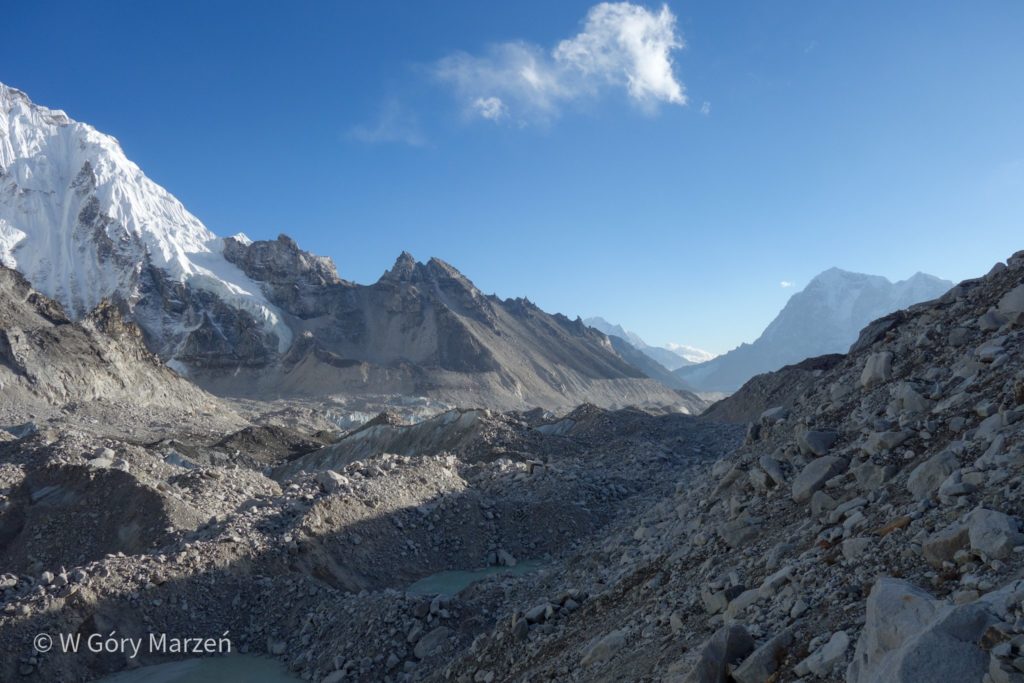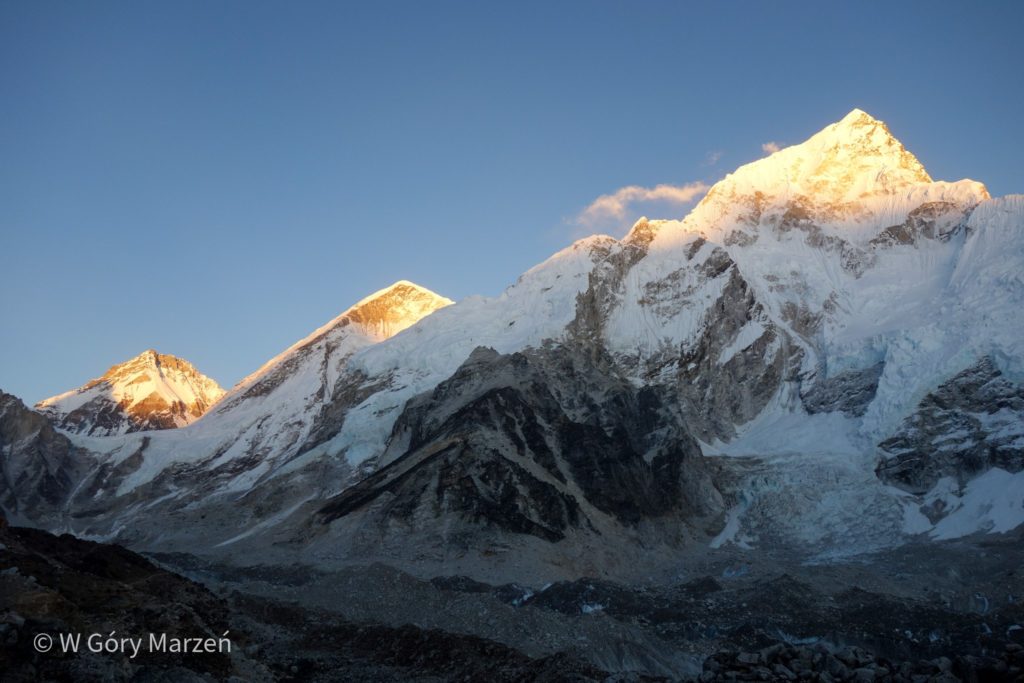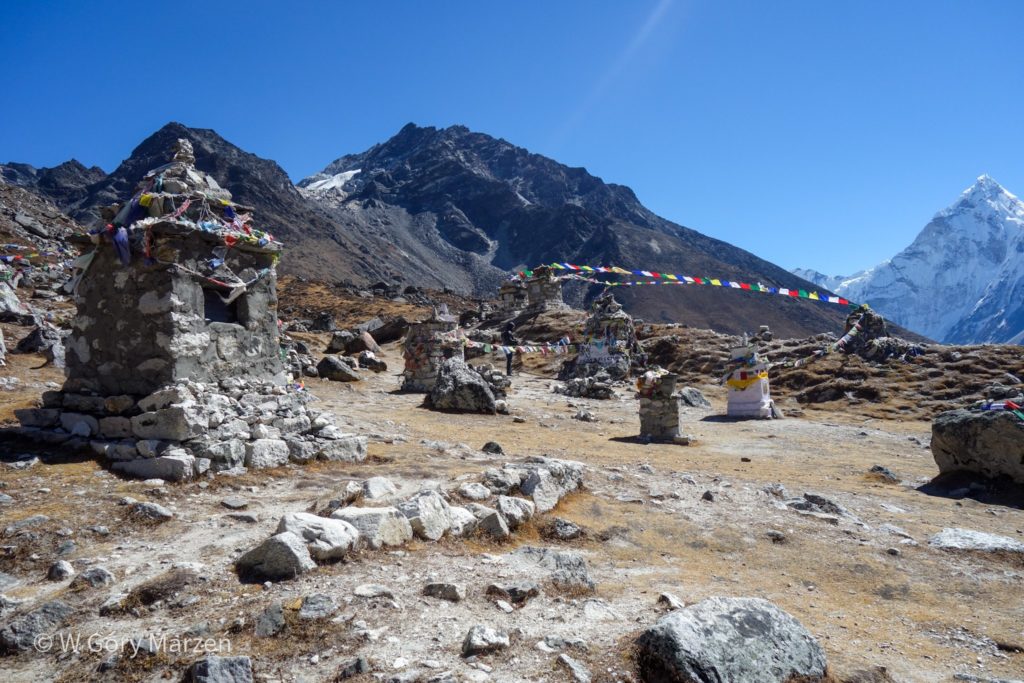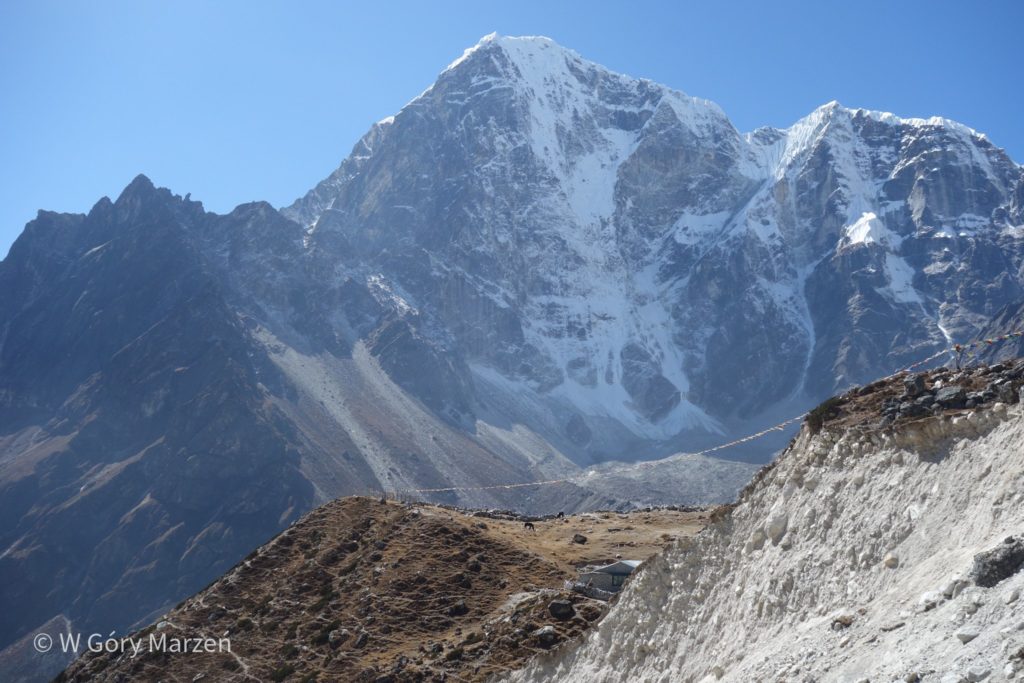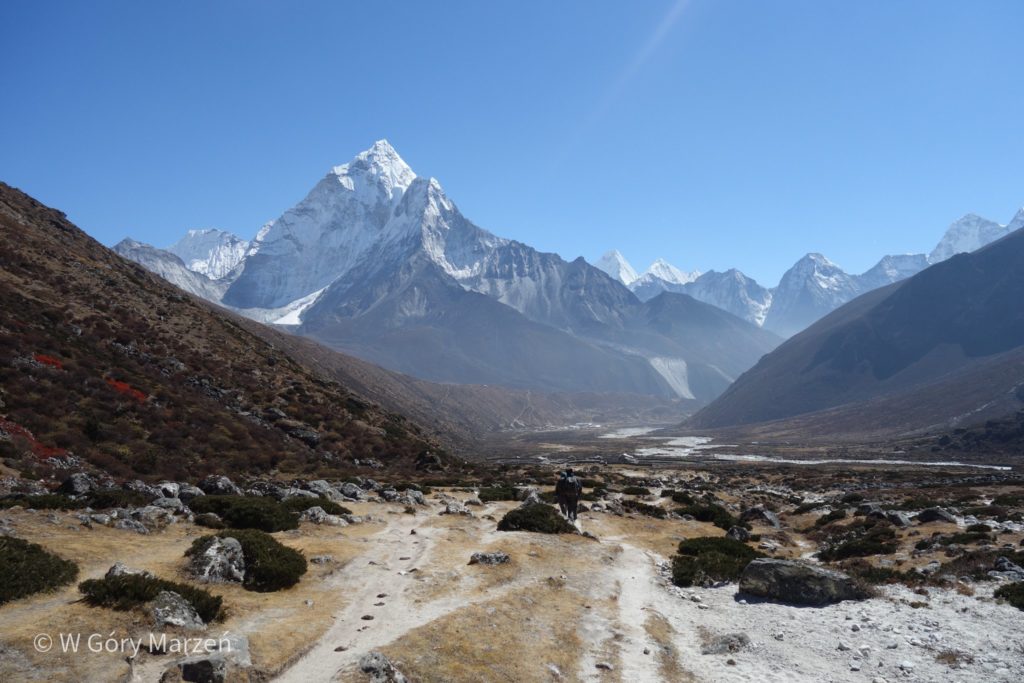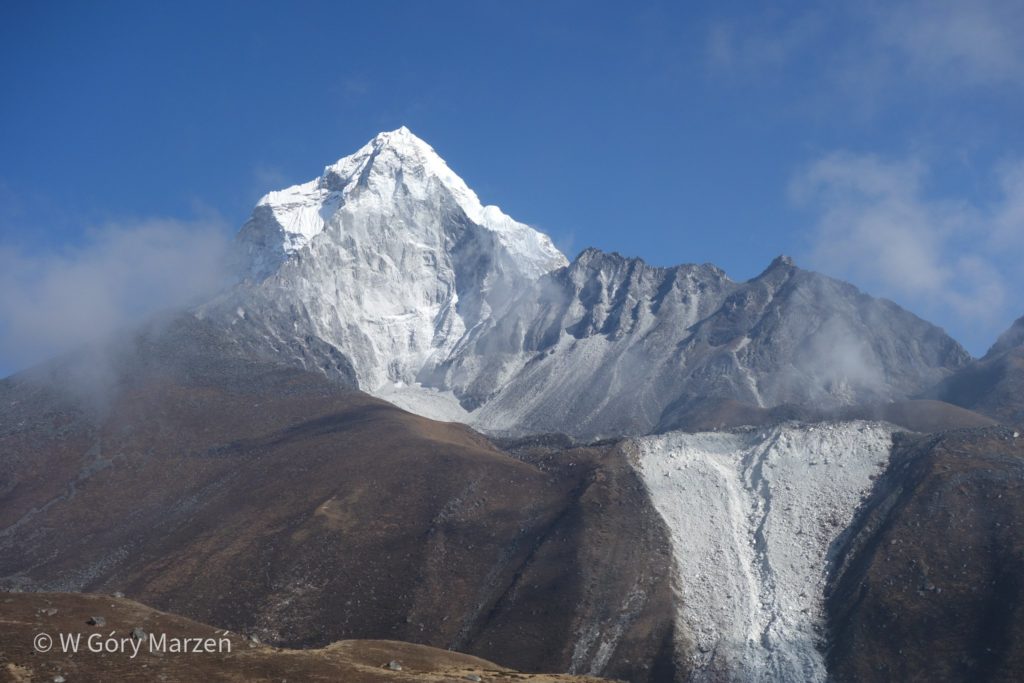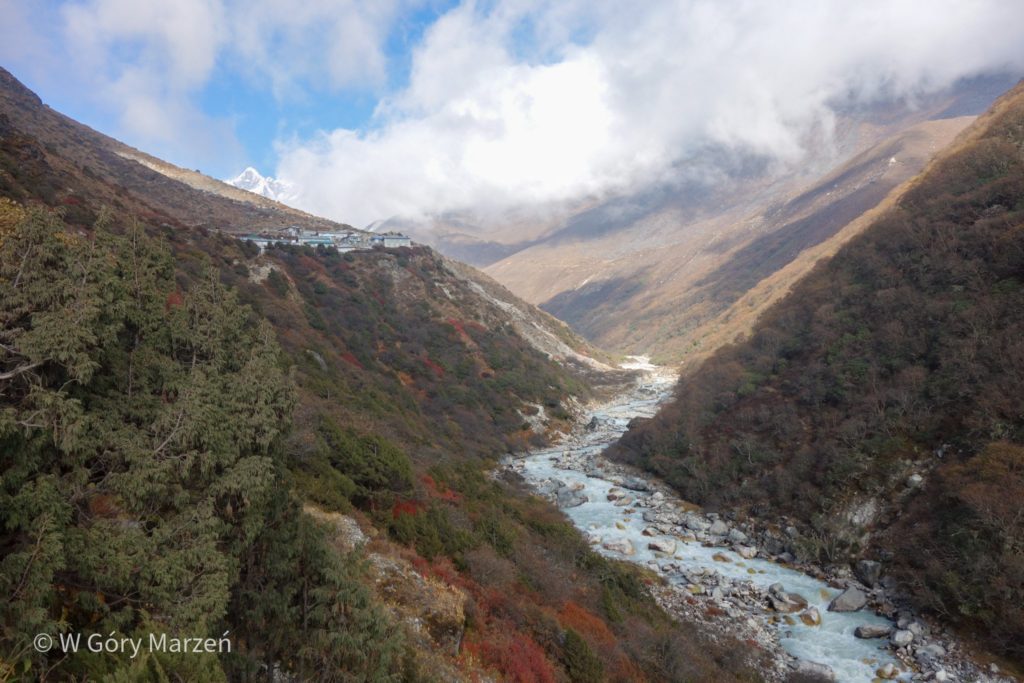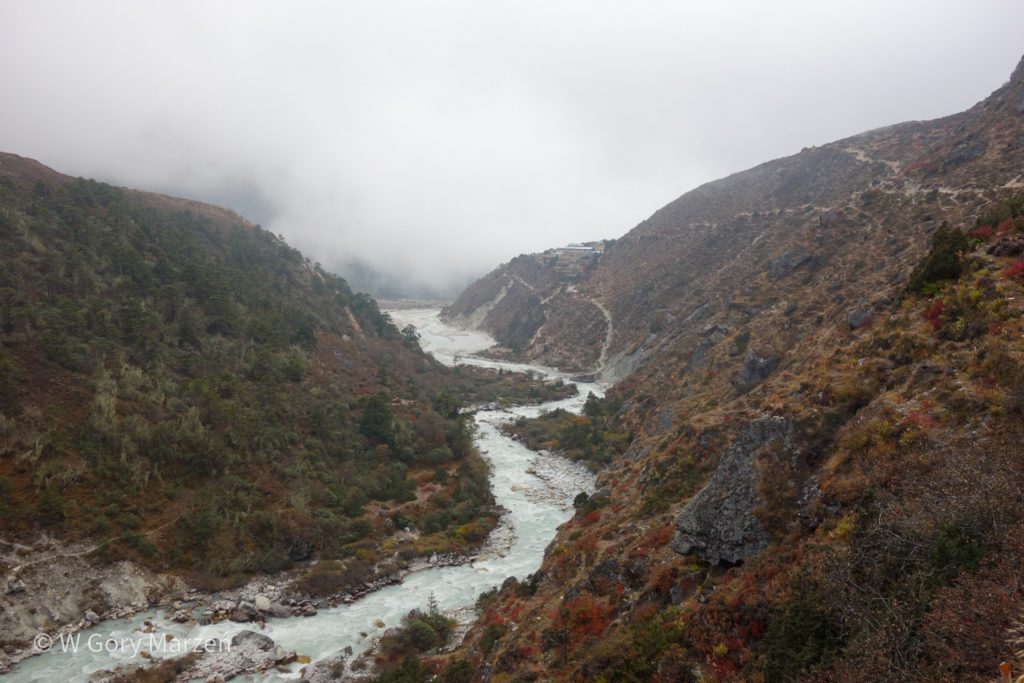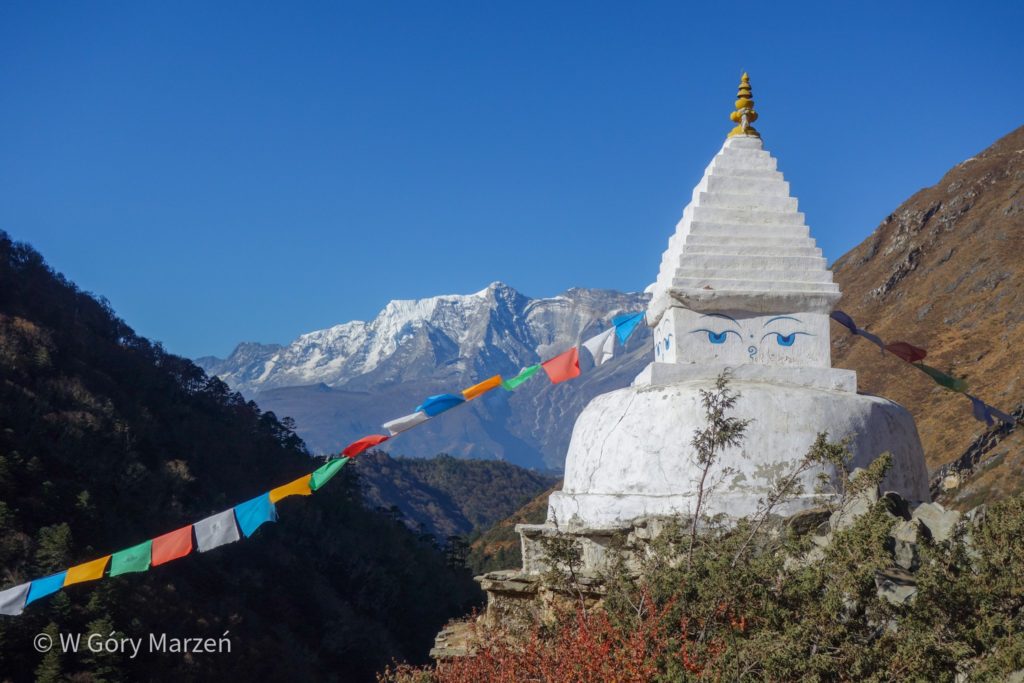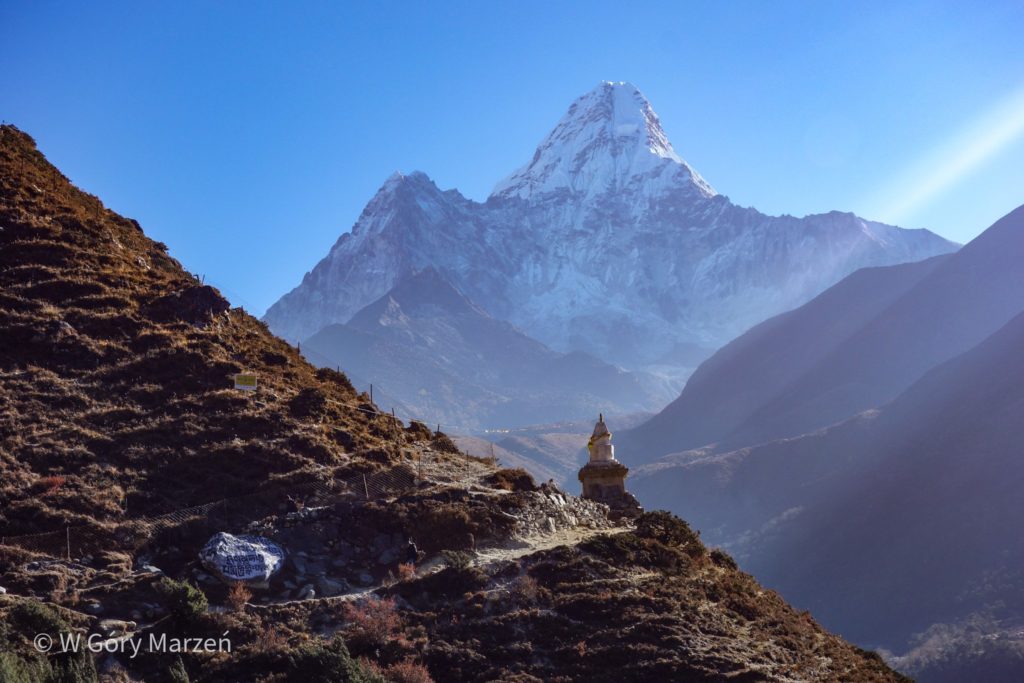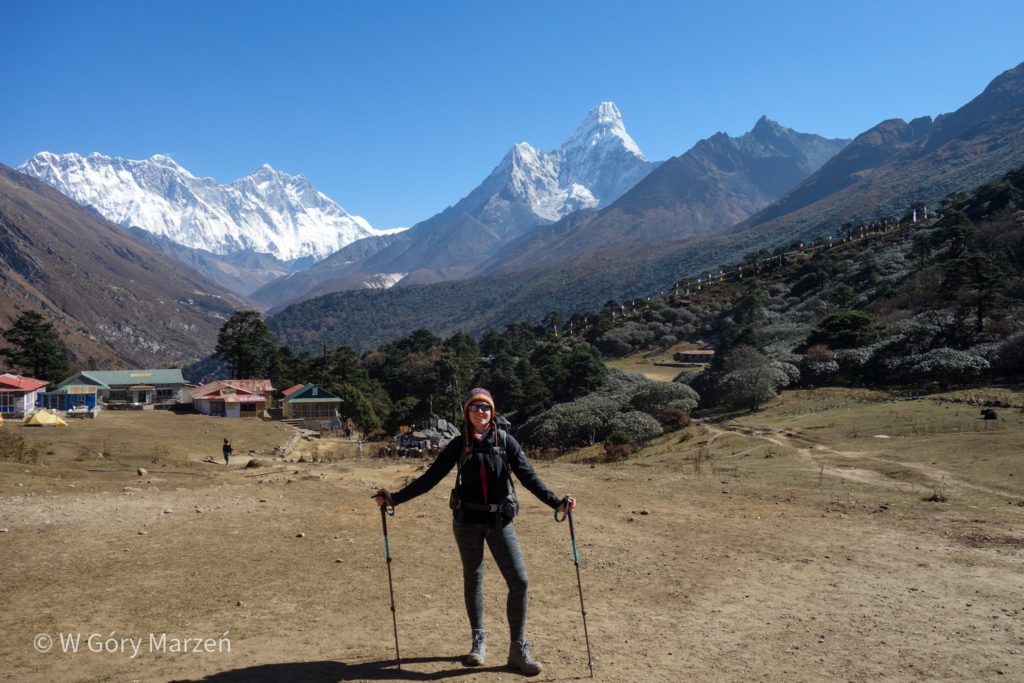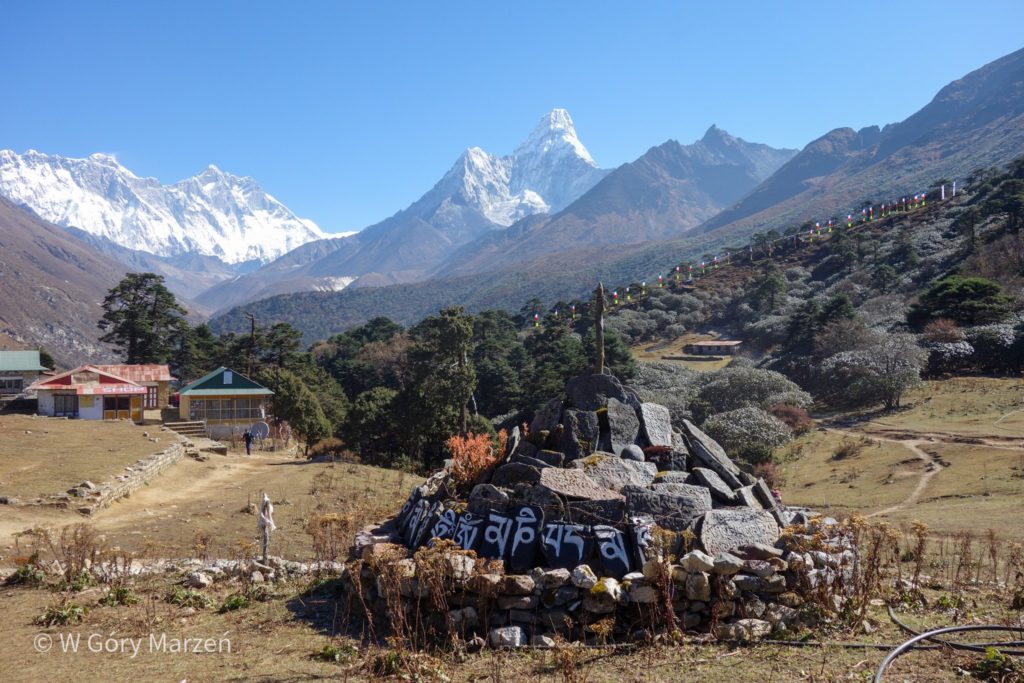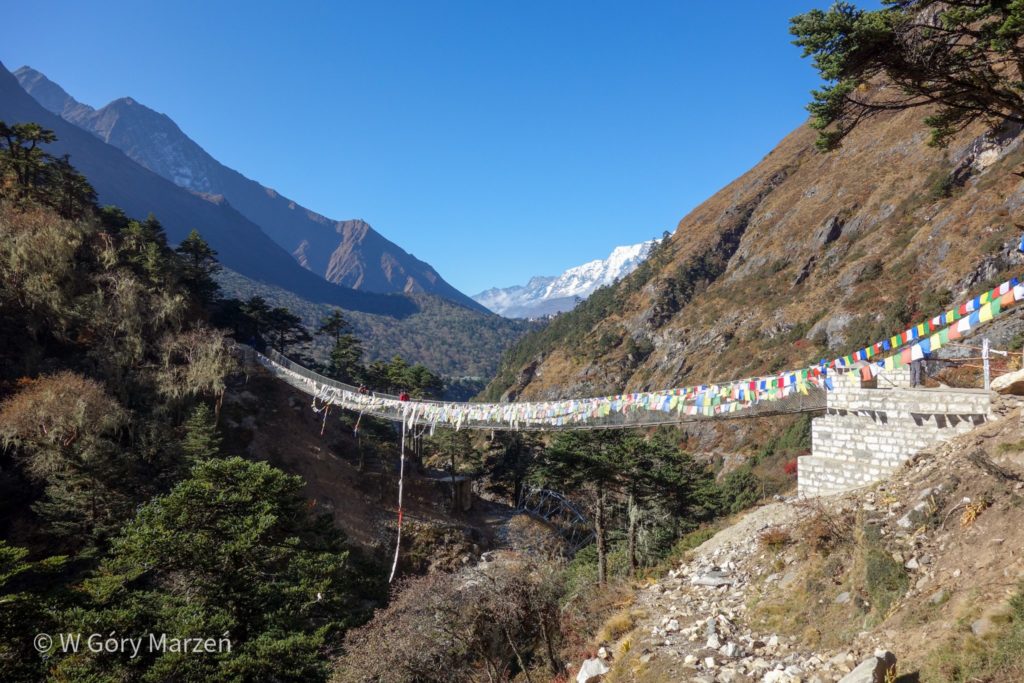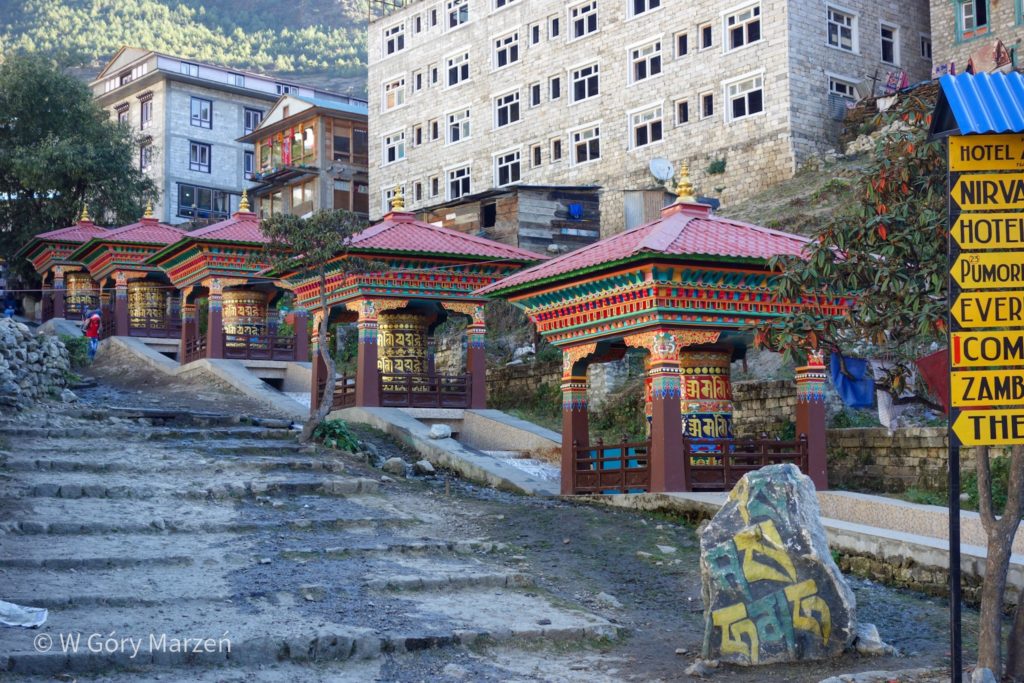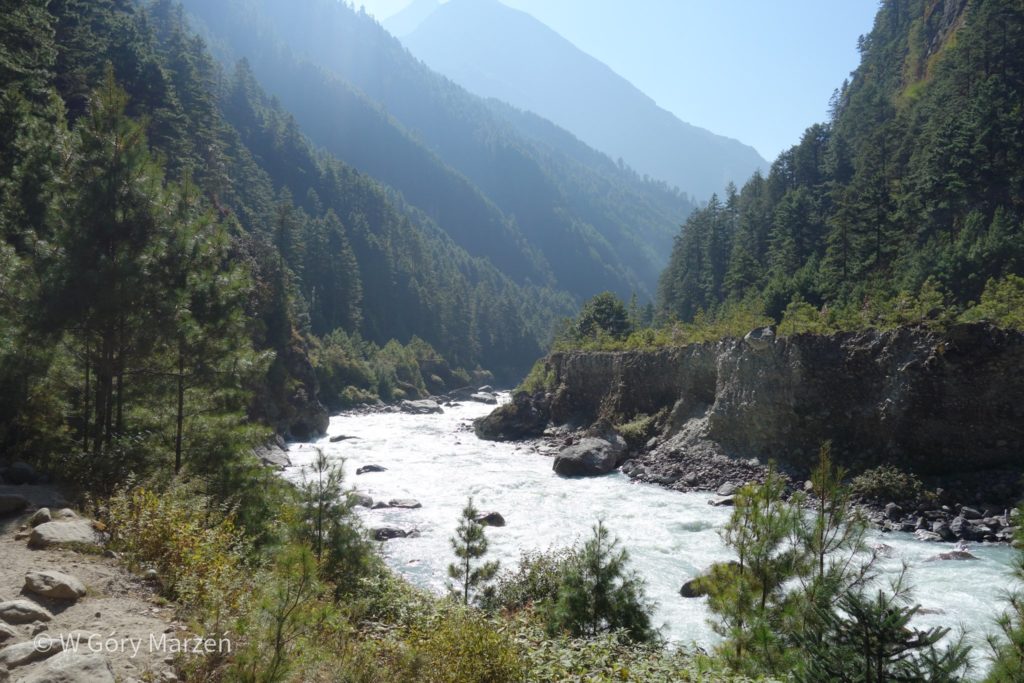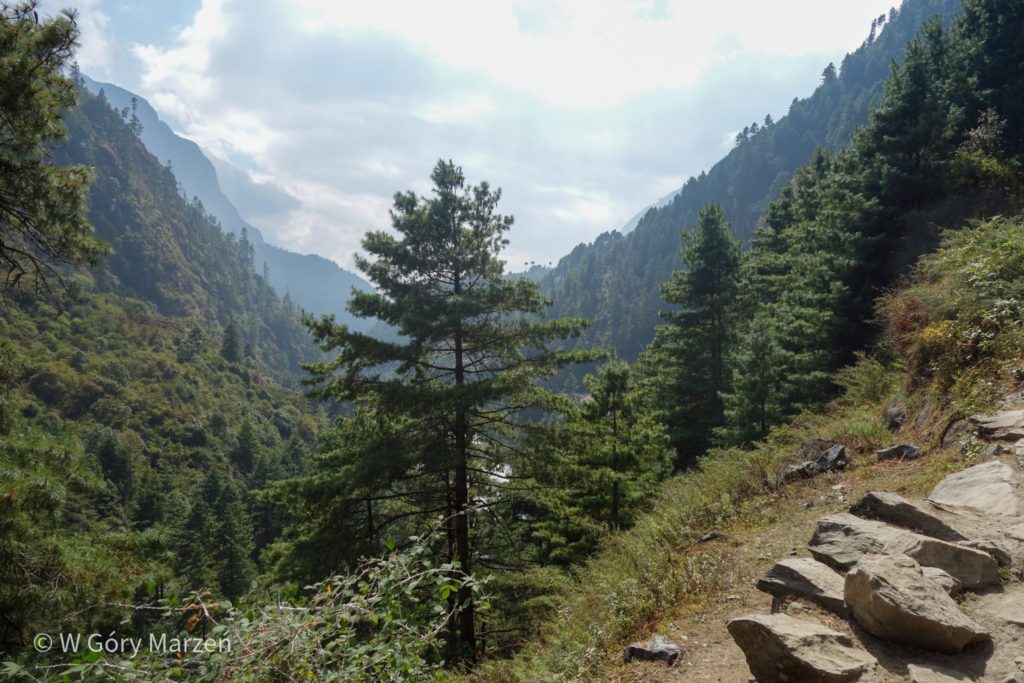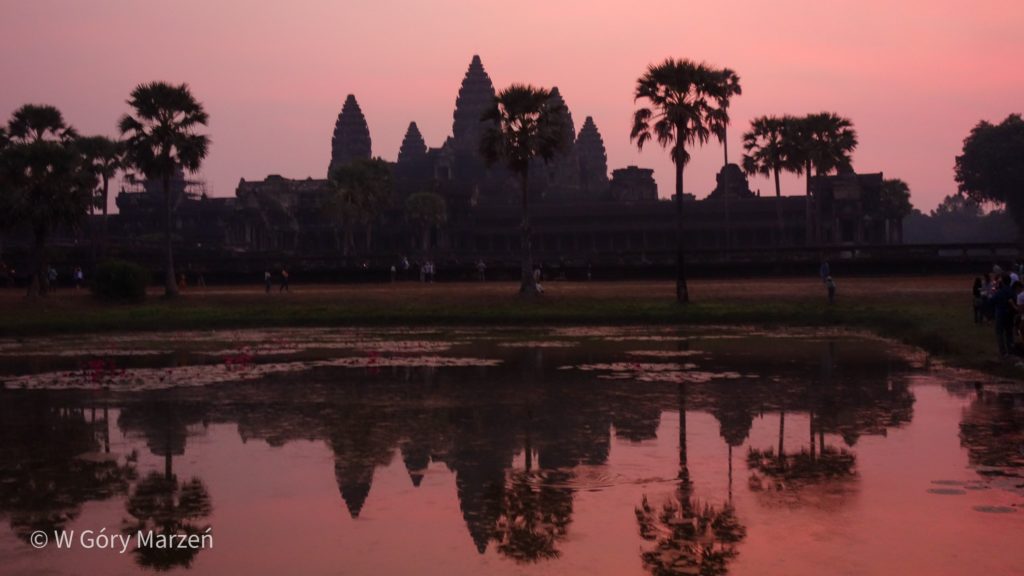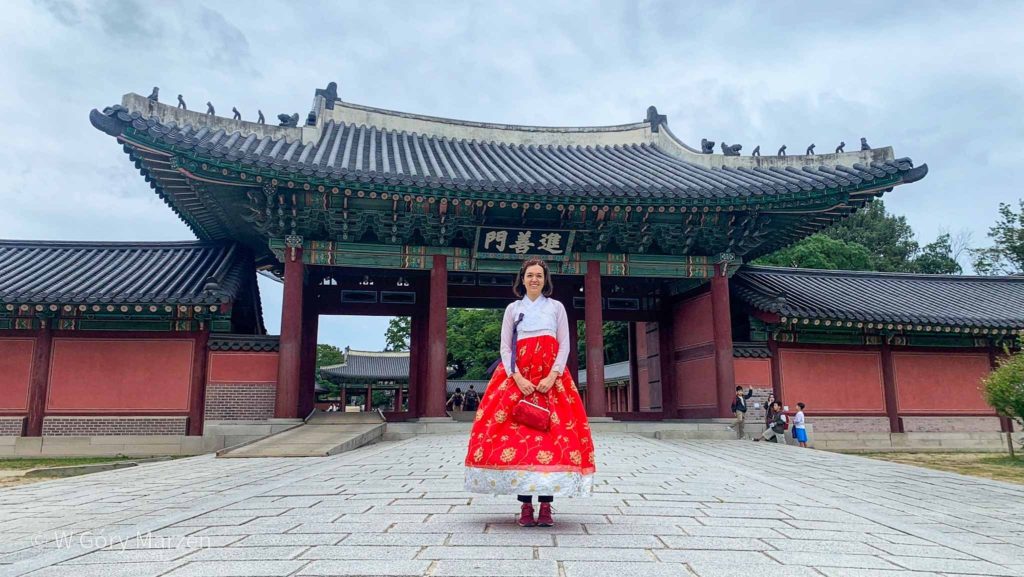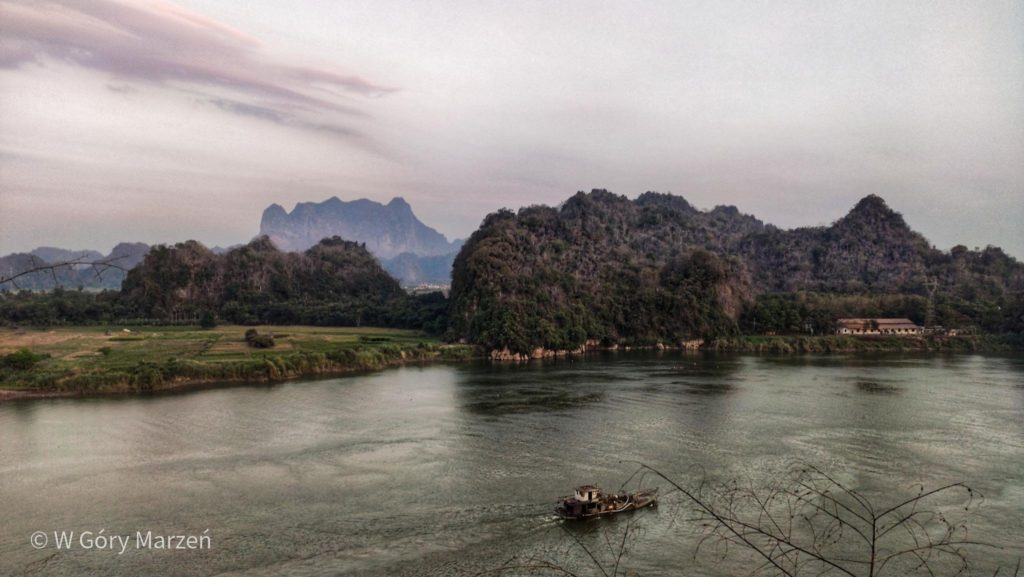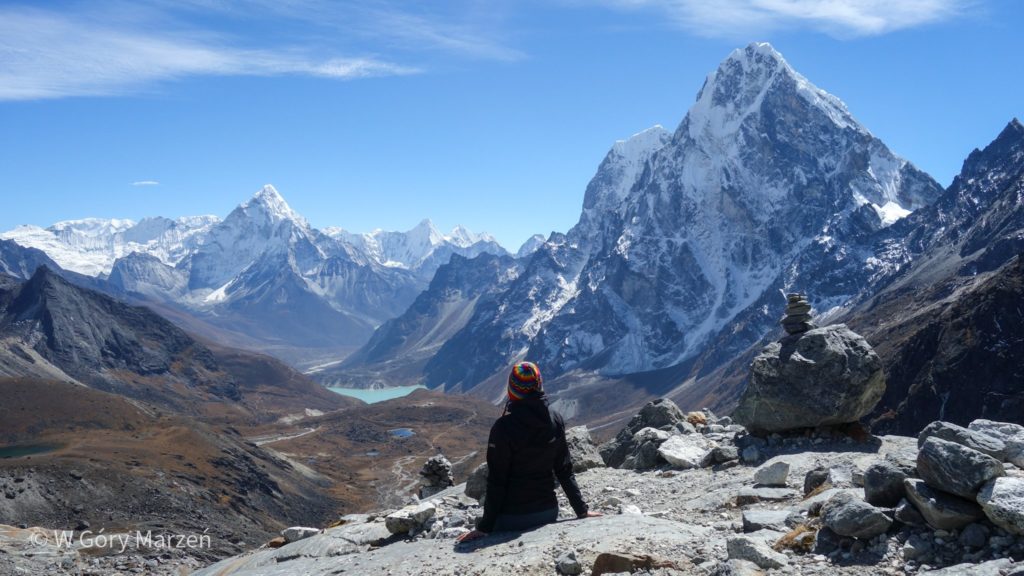
Everest Base Camp and Gokyo Ri Nepal trekking part 2
The second part of the description of trekking to the base under Mount Everest – Everest Base Camp (EBC) by Gokyo Ri and Chola Pass. Description of the first part – the beginning of the route from Lukla to Gokyo at this link.
Day 8: rest in Tagnag
We start the new week with a rest day in Tagnag (4700m). Yesterday’s ascent to Gokyo Ri (5375m) made itself felt, and thanks to the lowering of the altitude, we hope to regenerate some strength. The highest point of the expedition is still ahead of us.
We spend the day sunbathing (during the day at such an altitude the sun warms very strongly – high-mountain glasses are necessary!) and walks around the area. After dark, I also try the first night photos in the mountains.
Day 9: Tagnag – Chola Pass – Dzonglha
Stage 1: Tagnag – Chola Pass
This is one of the most demanding days of trekking. We get up around 4 am, before sunrise. In front of us is the entrance to the Chola Pass (5420m) and the hike to Dzonghli (4845m),where we have accommodation.
In the morning, the temperature is about -20 degrees. It is necessary to have a headlamp. We are going east, so the sun is still hiding behind the mountains. I wait with longing for the first rays of the sun. We walk in a tight group until we see the pass. The climb looks incredibly steep – I ask our guide if it is possible to climb without climbing equipment. He replies that, by all means, it is only a passage too steep and dangerous for yayas. We also meet here more tourists who go in the opposite direction.
The approach to the Chola Pass is very tiring. We continue to walk in the shadows, also my hands are slowly losing their feeling. The route is steep, you often have to support yourself with your hands. I would not recommend it for very beginners. In addition, the matter is made more difficult by the height, although after acclimatization on Gokyo Ri it is much easier to breathe. After 6 hours I reach the pass, where together we enjoy our achievement. This is the highest point on earth so far that I have been to! From here we have a beautiful view of the Himalayas. The sun also shines, so we can bask in its rays.
Further wandering leads through the glacier, this time it is covered with ice. However, it only takes us about an hour to walk this section and at that moment we did not need winter equipment. This is the only snow and ice we encountered during trekking.
Stage 2: Chola Pass – Dzonghla
After passing through the glacier, we reach a viewpoint from which there is a beautiful panorama. It’s literally breathtaking. Straight ahead we look at Ama Dablam, on the right we have Taboche, and between them a wide vast valley, in which you can also see a picturesque lake. In my opinion, this is the most beautiful view on the whole trekking,and even the most beautiful I have seen in my life. We take a break here to enjoy the view.
After the break, we reluctantly move down. We still have to go down to the valley and go through it to the lodgy in Dzonghli and it gets late. After a few hours we reach the place. Lodga in Dzonghli is a little disappointing. It was the longest route we cover, but for these views it was worth it. I’m starting to feel the proximity of the main trail to Everest Base Camp, as prices are starting to rise a lot.
Day 10: Dzonglha – Lobuche (Pyramid)
The next day we get information from the guide that all accommodation in Lobuche (4910m) is occupied. We can choose an alternative – a hotel in the Piramid International Laboratory research station (5050m). We have to pay a little extra, but the price includes a hot shower and heating of the rooms. In addition, for dinner you can choose a dish with chicken (in Nepal I still ate meat, although just after returning, among others thanks to this trip, I stopped), because supplies are delivered here by helicopter, and in the remaining lodgs dead animals are transported on the back of yaks even for a few days. This prospect seems like paradise and in the morning we set off full of hope for a luxurious overnight stay in a warm hotel.
From Dzonghla we set off towards the main trail to Everest Base Camp. We pass the beautiful lake Chola Tso and the Taboche peak towering over it, the view of which has accompanied us for several days. On the main route we meet a lot of people. After our practically lonely trip, it seems like a highway to the ECB. You have to watch out for tourists, which carry luggage and for dust floating with the wind. Covering your mouth and nose is essential at this stage of trekking.
The views are still incredibly impressive, although the panorama changes as the trail leads north. We can admire the beautiful Pumori mountain (7161m) along with the mountains on the Nepalese-Chinese border. We pass the village of Lobuche and go higher. This will be the first night at an altitude of more than 5 thousand. Metres.
On the spot, dreams of a 5-star hotel are splashing. However, the conditions for the high Himalayas are excellent. In the rooms there are heaters, you can take a hot shower. There are even hair dryers. In addition, we are shown around the laboratory by one of the scientists.
Day 11: Pyramid – Gorakshep – Everest Base Camp
Stage 1: Pyramid – Gorakshep
The next day we go to Gorakshep (5165m), the last village before Everest Base Camp. The road is calm, I admire the 7-thousanders towering over the trail and the Khumbu glacier. In Gorakshep we take a break for lunch and rest. In Gorakshep, due to its location, there is no running water. And that is why, for example, teeth can be brushed only in bottled. Also, all prices are correspondingly high. This is the highest located accommodation on our route.
Stage 2: Goraksep – Everest Base Camp
After lunch, on the same day we will go to see the base under Mount Everest. As we approach, the tip of the highest mountain in the world also emerges. However, when we reach Everest Base Camp (5364m) we can no longer see it.
In October, expeditions to the summit are very rarely organized, also the base is just a pile of stones on the glacier. And its location is indicated by Nepalese flags and a commemorative stone. However, at this point I imagine how important this place is for the history of Himalayan mountaineering. From now on I have a reference point for how it all looks. This is probably one of those travel destinations: to experience something, to see with your own eyes.
It is slowly getting late and we see clouds rising from the lower areas. We return to Gorakshep still observing the setting sun, illuminating Nuptse (7861m).
Day 12: Gorakshep – Pangboche
That day we had a planned morning ascent to Kala Patthar (5648m),but almost no one from our team has the desire to go there. Only one participant went with a Nepalese tutor. I’m pretty tired of being at such a high altitude. Dreams of a warm shower and tap water begin, or of delicious food that awaits in Kathmandu.
On the first day of return we go to Pangboche (3930m). This means descending more than 1200m vertically. It’s a long hike, but on the way we pass a symbolic cemetery for climbers who died in the Himalayas. There are m.in memorials of Scott Fisher or Anatoly Bukreyev. Unfortunately, the memorial of Jerzy Kukuczka is located a little further and is not on our route.
Then we walk along a wide valley towards Ama Dablam. This huge amount of space also made an amazing impression on me. I am slowly beginning to notice the vegetation, although at first it is only dry grass. We come to a mountain stream and immediately after crossing the border of 4 thousand. meters begin to appear the first green and red colors. After a week of looking at the rocks and snow, this green makes an amazing impression. Literally feel how oxygen gives life. We also breathe much better.
Day 13: Pangboche – Namche Bazaar
The next day I set off from Pangboche full of strength. The first stop is the Buddhist monastery in Tengboche (3867m). We have the opportunity to observe one of the daily prayers in the monastery. There is also a beautiful view of Ama Dablam.
We move down towards the already known Namche Bazaar (3440m). The body gets more and more oxygen. It also causes a little stupidity – laughter at everything. There is also more and more vegetation on the route.
In Namche Bazaar we have our first contact with civilization. We go in search of the famous German bakery Hermann Helmers to eat something other than rice from vegetables or pasta with vegetables. Fortunately, it is open and we can enjoy sweet pastries and free wifi 😉
Day 14: Namche Bazaar – Lukla
From Namche Bazaar we set off on the already known route to Lukla. We feel the end of trekking, we pass tourists just starting their adventure in the Himalayas. The hike is long, but acclimatization gives us lightness in the march. I reach Lukla in the afternoon on the one hand happy with the adventure I have experienced, from the proximity of the mountains. On the other hand, it’s the end and the last night in the mountains. Here, too, we thank you and say goodbye to our porters.
Day 15: Return to Kathmandu
We have a plane to Kathmandu in the morning, when the weather conditions are the best. For the last time from the plane I observe the highest peaks of the world.
It was an amazing trekking. My first multi-day trekking. I am very grateful that I was able to take part in it. I also greet the whole team and the guide Hari, with whom we spent together both these difficult and joyful moments.
Trekking in the Himalayas certainly requires effort, but it is not as unattainable as it may seem 🙂 And these amazing sights and the feeling of the power of the mountains reward every effort 🙂
If you find this post useful and feel like supporting my activities, you can give me a coffee by clicking on the link below. Thank you!
